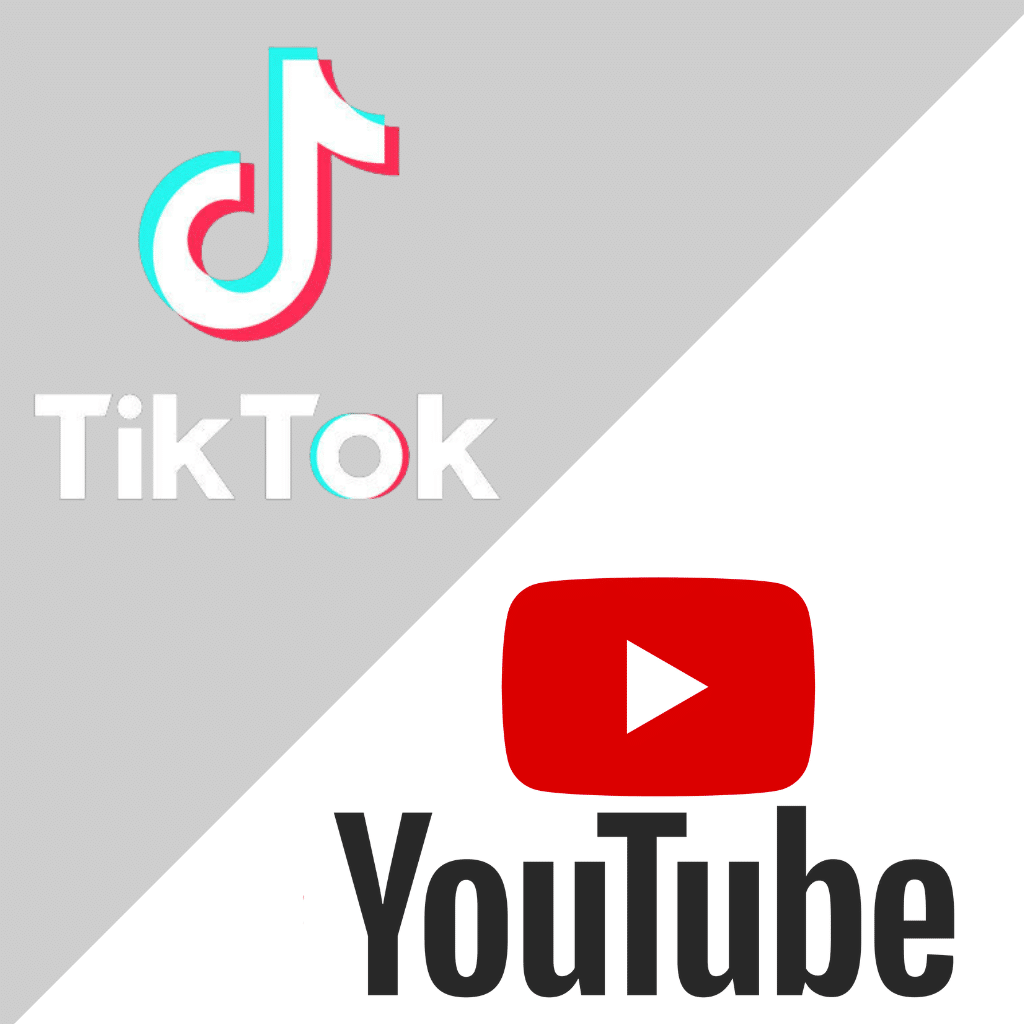PLATFORM SHOWDOWN: TIKTOK VS. YOUTUBE - WHICH ALIGNS WITH YOUR GOALS?

BY HEIDI MCIVOR ALLEN
Ask any savvy business leader and they’ll tell you that thriving in today’s market demands a robust presence on social media. It’s not a matter of “should you,” but rather, “where should you invest for maximum impact?”
That’s where the TikTok vs. YouTube debate comes into play. Both platforms offer tremendous potential for businesses to connect with their audience, boost sales, and foster a sense of belonging through captivating video content.

What makes these platforms truly special is their dual role as search engines for users. Believe it or not, YouTube ranks as the second-largest search engine globally. And for Generation Z, TikTok is their equivalent of Google.
Whether you opt to craft custom content to cultivate organic growth, collaborate with influencers, or run targeted ads to boost your sales, both YouTube and TikTok have a treasure trove of opportunities waiting for you.
TIKTOK VS. YOUTUBE: KEY DIFFERENCES
When it comes to choosing between YouTube and TikTok, your decision should revolve around your business goals, the specific demographic you’re targeting, and the kind of content you create. Staying flexible, trying out different platforms, and consistently prioritizing your audience’s preferences should be your guiding principles.
Here’s a quick overview of what each platform offers:
YouTube
TikTok
Target Audience
Content Format & Flexibility
User Engagement & Community Building
Advertising Options & Monetization
PROS OF YOUTUBE
A Wide Range Of
Content Types
YouTube and TikTok provide a wide range of content options that serve diverse audience preferences.
TikTok shines with its dance videos and concise tutorials, epitomizing the spirit of transient trends and moments. In contrast, YouTube boasts a vast spectrum of content, ranging from casual vlogs to expert business seminars.
The sheer variety found on YouTube is astonishing. Whether it’s a detailed cooking guide, a humorous sketch, or an extensive tech analysis, the platform covers it all. This richness underscores its flexibility for businesses, ensuring a little something for every audience.
2
Long Form Content Possibilities
YouTube has functioned as a haven for brands searching to explore a variety of content formats. Its platform seamlessly accommodates everything from 30-minute high-intensity workouts to two-hour in-depth podcasts, and everything in between. Additionally, YouTube has introduced YouTube Shorts, a feature enabling users to create quick 15-to 60-second videos comparable to TikTok.
3
Established & Popular Platform
As established figures in the digital realm, both YouTube and TikTok have solidified their positions as beloved platforms. With over 2.7 billion active monthly users, YouTube’s dominance is evident.
On the other hand, TikTok, while newer, has rapidly accumulated an impressive 1.1 billion monthly active users thanks to its engaging user-generated content. Features like user-friendly interfaces, a diverse content selection, and personalized recommendations have played key roles in the monumental success of both platforms.
4
Target Audience Options
Recognizing and tailoring content to the appropriate audience is vital for achieving content success. YouTube, due to its extensive reach, caters to a wide-ranging audience. This following spans from inquisitive children and trend-chasing adolescents to knowledge-seeking adults and seniors.
The addition of YouTube Shorts reinforces its attractiveness to the younger demographic. Conversely, TikTok primarily connects with the younger generation, presenting businesses with a focused demographic for targeting.
5
Higher User Engagement Rates
In the digital landscape, engagement is an invaluable currency.
Both TikTok and YouTube have nurtured environments where user engagement prospers. Captivating content not only keeps viewers glued but also wields a significant impact on algorithmic rankings and content suggestions. (Take a look at these straightforward YouTube SEO Tips to boost your video rankings in search.)
TikTok thrives on the power of virality, ensuring users stay interested in trending videos. In contrast, YouTube’s algorithm places emphasis on user interactions, promoting content that aligns with individual preferences.
6
Ability To Monetize Content
YouTube provides a clear roadmap to monetization, offering various paths such as ad revenue, affiliate marketing, and brand endorsements. An insightful study by Google revealed that YouTube outperformed television in ad return on investment (ROI) in 77% of cases.
Alternatively, TikTok opens up opportunities, although lacking direct monetization options similar to YouTube’s AdSense. Established brands on TikTok can stimulate sales through advertising, collaborations with brands, and influencer marketing initiatives.
PROS OF TIKTOK
TikTok predominantly captures the attention of the younger generation with its quick and viral content features. From serving up a smorgasbord of bite-sized videos to leading the charge in trending challenges, TikTok has revolutionized the landscape of content creation and consumption.
Let’s delve into what sets TikTok apart as a remarkable platform.
1
Bite-Sized Content Possibilities
2
Ideal Platform For Viral Trends
Thanks to its algorithm and passionate user engagement, TikTok is a massive hub for popular trends and challenges. It creates an environment where content can go viral overnight.
With its unique content, TikTok has become synonymous with internet trends that often spill over to other platforms such as YouTube and Instagram.
TikTok’s Creative Center is a valuable resource, offering insights into new trends and providing trend reports to assist businesses in navigating the platform more effectively.
3
TikTok Shopping Options
TikTok Shop provides a personalized e-commerce platform where sellers can genuinely connect with communities and content creators to create meaningful shopping experiences. Brands can seamlessly blend entertainment and shopping, build trust through TikTok creators showcasing their products, and leverage in-app features like LIVE shopping and shoppable videos.
The platform offers a smooth checkout process, scalable support tools, and collaboration opportunities. These all lead to tangible sales growth, as demonstrated by several sellers’ successful case studies. Importantly, TikTok reports that 70% of its users discover new brands on the platform and 3 out of 4 users are inclined to make a purchase.
4
Highly Engaged User Base
TikTok and YouTube both enjoy passionate user communities, with distinct demographic inclinations.
However, in the realm of short-form content, TikTok reigns supreme. Despite YouTube’s introduction of YouTube Shorts with an average engagement rate of around 3.80% and Instagram’s Reels with an average engagement rate of 4.36%, TikTok stands out with notably higher engagement levels.
If you’re witnessing robust engagement, but still striving for improved conversions, be sure to explore these tried-and-true TikTok marketing strategies to boost your conversion rates.
HOW TO CHOOSE BETWEEN TIKTOK VS. YOUTUBE
Want to Read 5 Marketing Tips for Small Businesses?
Check out this blog post and see if your business is currently tackling these Top 5 Marketing Tips. If you have questions or find you need help in an area, reach out!
Like What You Read? Share It!




